


 |
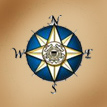
| The War that has never ended… | |
|
More than 60 years ago a conflict has started between the two parts of the same country sadly divided by allies forces at the end of World War II. The division driven by political motives left more than 2.5 million dead and millions displaced. And that's considering that the population of Korea back then was around 30 million! Visiting Demilitarized Zone or simply DMZ is somewhat special. Officially two countries are still in the state of war. There is no peace treaty signed. The lonely bullet-ridden locomotive serves as a reminder of the violent past. |
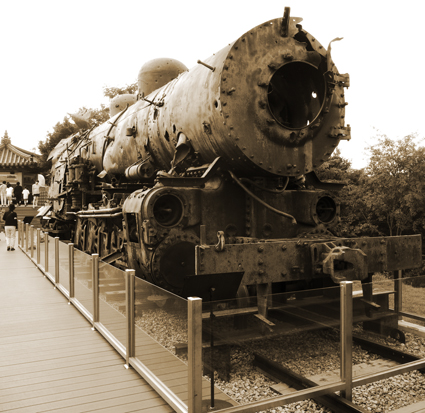 |
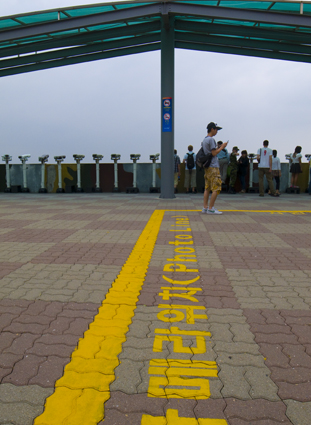 |
The DMZ is only 2.5km wide beginning from the mouth of the Imjin river and stretches along some 248km to the sea of Sea Of Japan (East Sea). The area is covered with mine fields. As nobody travels there, the wildlife flourishes amongst the rich vegetation. The border cannot be photographed and a special observation platform with a military post has been setup on one of the hills. Tourists are allowed to take photos anywhere but from behind the yellow line. There are two villages that are seen on both sides of the border. Both have flagpoles that carry national flags. Initially the South Korean flag pole was taller. Not to be outdone, the North Koreans constructed even a higher flagpole and hung a larger flag. The irony of their pursuit to superiority is that the North Korean flag is so heavy it almost never waives in the wind. A single railway bridge connects two countries and is used to transport South Korean workers to the South Korean factory located in North Korea. Yes, unbelievable but true! There is a factory that employs a few hundred North Koreans to produce simple products. South Korean businesses take advantage of the cheap labor but accepting all the risks associated with these arrangements. On a number of occasions North Korea threatened to close the factory and expel foreign workers, but the business appears to be beneficial to both sides and thus the factory is kept operational. The South Korean workers there have to adhere to strict rules and regulations for dress code and behavior. The offenders are arrested and expelled. |
|
Back in the 1970s a number of infiltration tunnels were discovered. The North Koreans dug them up in preparation to attack on Seoul. The tunnels seem to all point in the city's direction. Only some tunnels are opened to visitors. One of them is the 3rd infiltration tunnel. Its length is about 1.5km and it sits at the depth of more than 70 meters. Only an odd 200 meters of the tunnel are opened on the South Korean side. The rest is blocked and booby-trapped to release water in case of an attack. |
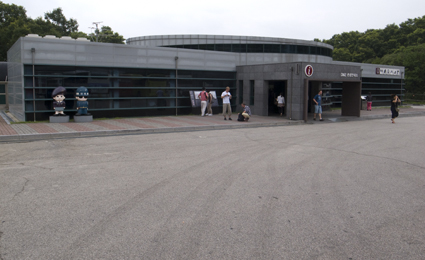 |
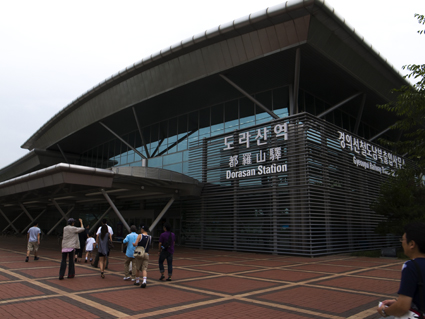 |
Dorasan Station is a peculiar place. It is the last station in South Korea before crossing border to North Korea. It was built recently to facilitate regular travel between two countries. Once inside, there is a proper customs area and a passport control. It looks very lonely as the station has been opened only briefly and then shut down due to yet another political conflict with North Korea back in 2008. |
|
In the heart of many Koreans there is a hope for the re-unification. Here's an amazing monument that symbolizes future unity of this beautiful but divided country. |
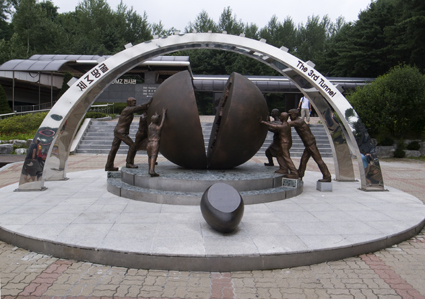 |